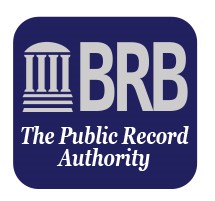The Online–Onsite Equivalency Factor for Accessing Court Records
Industry: Books
If you are a professional and court records are important to your operation, then knowing if you are accessing a primary or secondary data site is extremely important.
Tempe, AZ (PRUnderground) October 11th, 2017
A common practice today for many professionals such as background screeners and private investigators is to try to save a buck and/or find an edge over their competition by using online sources instead of going to the courthouse in person. This of course makes sense if the online source is equivalent to the public terminal at the courthouse. But the reality is that often times an online source is incomplete and cannot be used except as a secondary resource.
Here are Some Relevant Statistics
- 73% of criminal courts offer online access to the docket index (Also 75% of civil courts offer online access to the docket index).
- 32 states have a state judicial system that provides online access to the docket index, accounting for 74% of the courts that are online.
- Over 1,000 courts individually provide online access via their own proprietary system or via a contracted vendor.
But the real bottom line is:
- Approximately 33% of the court online sites are NOT online-onsite equivalent.
- Approximately 60% of the 3,142 counties and county-equivalents in the U.S. offer online-onsite equivalent court records.
Where to find a list of Online-Onsite Equivalent Courts
The reality is you will not find access to a free national guide by simply calling a competitor or by posting a request on trade association site or via a Google search. This information is much too valuable. Firms who have taken the time to analyze and compare the credibility for using certain online systems vs. going to the courthouse are not going to freely give away any results.
How Can You Determine Online-Onsite Equivalency?
There are a number of comparative factors to consider when analyzing the results of an online search versus an onsite search.
1. What is the date range of the records online – meaning how far back do the records go online? For example, online sources do not necessarily go back the same time frame as the onsite search from the same jurisdiction.
2. How reliable is the database in terms of record completeness and accuracy? In other words: Are all incidents recorded? Are all dispositions updated and recorded in a timely manner?
3. How reliable is the database in terms of geographic completeness and accuracy? Does the online site include records from all counties? Or are all courts in a county participating in the online access?
4. What identifiers are provided? Can you match the subject of the search to the record? For example, do you get the full DOB (or at least a partial) in order to match the subject to the record? Will you still need to ask the clerk for an identifier to confirm the identity of the subject?
5. How strong is the disclaimer? Will an online only search hold up in court as being a primary and thorough search?
Questions Your Firm Must Answer
- Does your firm cut corners? How important are cost factors, promised coverage to clients, or the level of due diligence needed?
- How will your search results hold up in Court? Start by making a statement about what is your Best Practice. Your statement should include:
- How You Monitor or Evaluate Sites (Is there ongoing monitoring?)
- How You Measure the Worthiness (Are sites rated as a primary or as a secondary resource?)
Solutions from BRB Publications
We hope this article gives some food for thought. The research performed by BRB Publications’ research specializes in providing objective information about public record access at over 28,000 government agencies. Two products, Criminal Record Sources (CRS) and the Public Record Research System (PRRS) both include evaluation statements on many individual courts. Plus both products include an extensive overview summary of all online statewide criminal systems.
Another feature of CRS is its Online-Onsite Equivalency Matrix. The Matrix rates each state’s online judicial system and each state’s online criminal record repository on a 1 to 5 basis, with 1 being the best. Of 37 state court systems (some states have multiple systems), 12 systems are rated as a 1 and 8 systems are rated as a 1.5. Of the 28 state criminal record repositories, none are rated as a 1 or 1.5, but 11 are rated as a 2.
About the Author
Michael Sankey is founder and CEO of BRB Publications, Inc. and is Director of the Public Record Retriever Network, one of the nation’s largest membership organizations of professionals in the public record industry. Michael has more than 30 years of experience in research and public record access. He has authored or edited over 75 publications and editions including The Sourcebook to Public Record Information, The Manual to Online Public Records, and The MVR Access and Decoder Digest. He is regarded as a leading industry expert in public records, criminal record access, state DMV policies and procedures, as well as knowing who’s who in the commercial arena of public information vendors.
About BRB Publications
BRB Publications, Inc. is the premier publisher of references and websites used for locating public records. BRB’s books and electronic products point the way to over 28,000 government agencies and 3,500 public record vendors who maintain, search or retrieve public records. The metadata provided by BRB includes in-depth descriptions of record access policies and procedures, access methods, restrictions, fees, turn around times, identifiers shown on records, and other needed tips and info used for public record searching. All products are up-to-date, comprehensive, and affordable.


